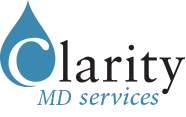Understanding how tax deductions and tax credits work would help guide many of your financial decisions. When physicians come to me with a specific question, they usually come with a few options in mind and only require some clarifications. More often than not, they would know the answers to these questions if they understand how tax deductions and tax credits work.
One way to look at deductions is to treat it as a business expense that reduces your income. When you earn $200,000 from fee for service and incurred $50,000 of overhead, your taxable income would become $150,000. Since your income is lowered, your income tax would be less for the year.
Income Tax Payable (Ontario)
$200,000 $72,158
$150,000 $48,173
The $50,000 expense reduces your tax by $23,985 for the year. A quick way to estimate the tax savings is to multiply the expense by your marginal tax bracket.
Income of $200,000 will put you at the 48% tax bracket (you pay 48 cents for the next dollar you earn). So, the tax savings calculation would go like this:
$50,000 x 48% = $24,000 (~$23,985).
So, the $50,000 overhead actually costs you $50,000 - $23,985 = $26,015 at the end of the year. In a way, the government is subsidizing your expense by taxing you less.
Here are a few examples on how this concept applies to other financial decisions.
1. When should you start RRSP (if at all)?
RRSP contribution is an example of tax deduction. The tax savings would depend on the tax bracket you are in. When you are in residency, you are likely to be in the 30% to 35% marginal tax bracket. So, putting $1,000 into your RRSP would only save you $300 taxes. You should defer your RRSP contribution until you are in practice where you are over the 43% marginal tax bracket.
2. How can the RRSP Home Buyers’ Plan (HBP) help you?
The sole purpose of the HBP is to increase your down payment. Although the process of the HPB seems complicated, there is a quick way to calculate what HBP can do for you. The maximum HBP allowance is $25,000 for 2015. By multiplying $25,000 by your marginal tax bracket, you would know how much tax you would save (whatever you saved would go towards the down payment) by using the HBP strategy. For example, if you are in PGY3 earning $63,000 a year (31% marginal tax bracket), using the HBP would save you $25,000 x 31% = $7,750 in taxes for year, which can go towards down payment. Keep in mind that this is under the assumption that you do not have other deductions or credits to lower your taxes.
3. Which debt should I pay off first?
Many physicians carry more than one loan early on in their carrier. Sometimes they wonder if they should pay off one before the other if they all carry the same interest rates. To answer the question, they would need to understand the difference between good debts and bad debts. A good debt is simply a loan or a line of credit with interests being tax deductible while . On the contrary, bad debt is referring to loan that does not have any tax deductibility on the interests. A practice loan or an investment loan would be considered a good debt. The reason why the interests on these types of loans are tax deductible is that you are borrowing to invest (in your own practice or a stock or mutual fund) with the expectation that you will receive a return on your investment.
There are other opportunities that allow you to apply this same concept. Next time you hear something is deductable, this formula “amount x marginal tax bracket” would help you determine how much tax that deduction would save you.









